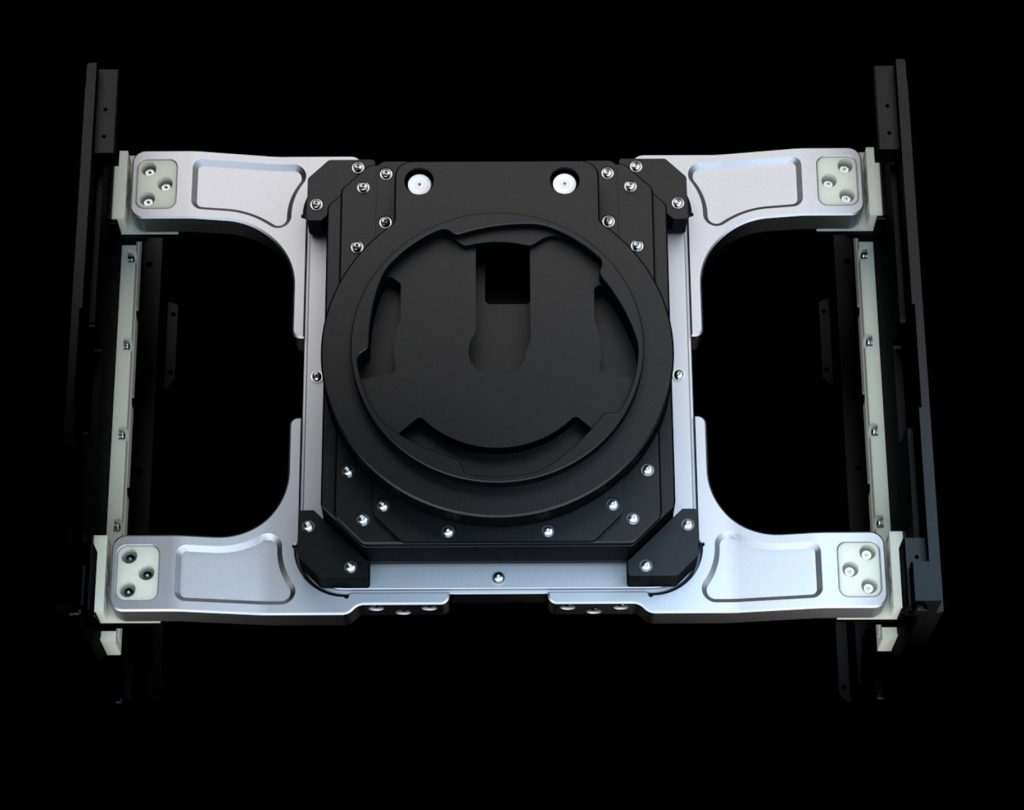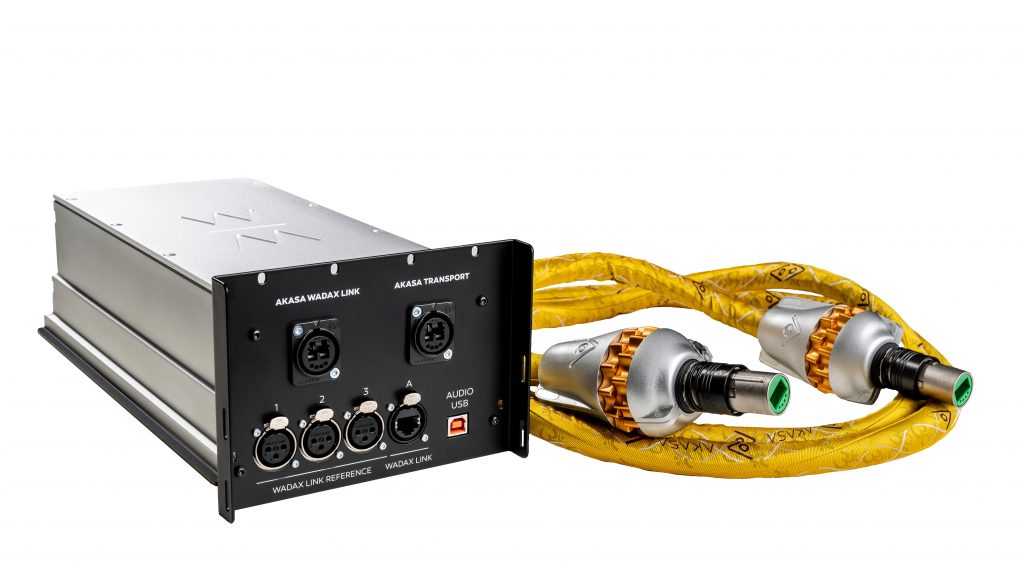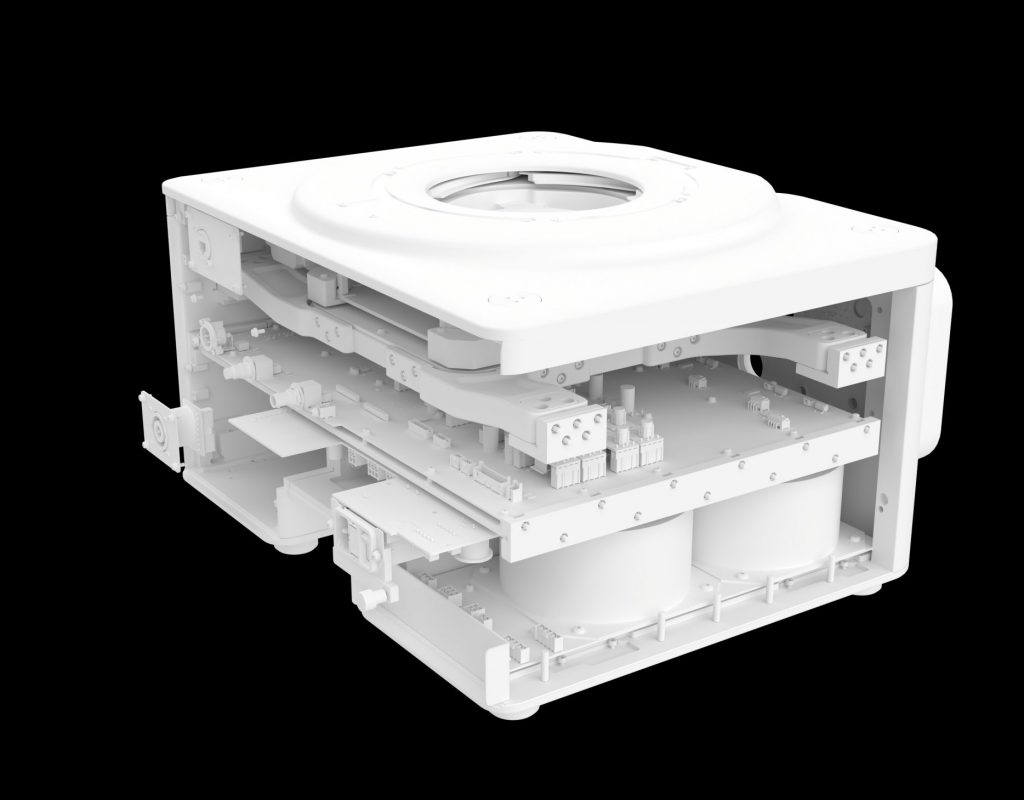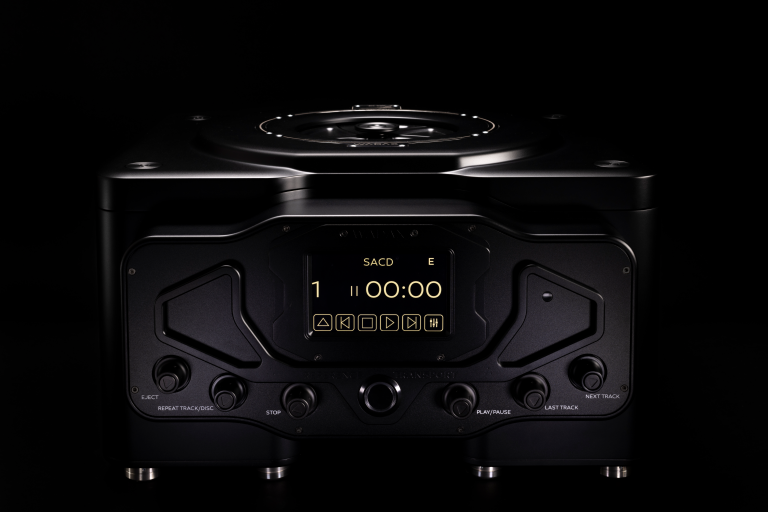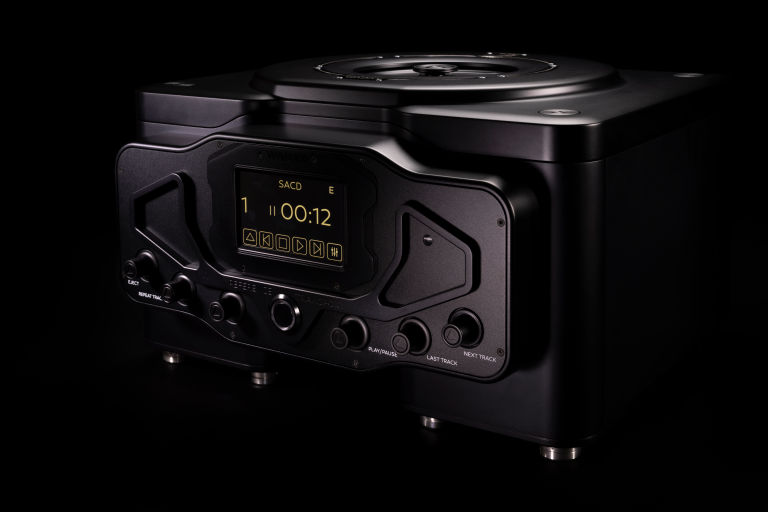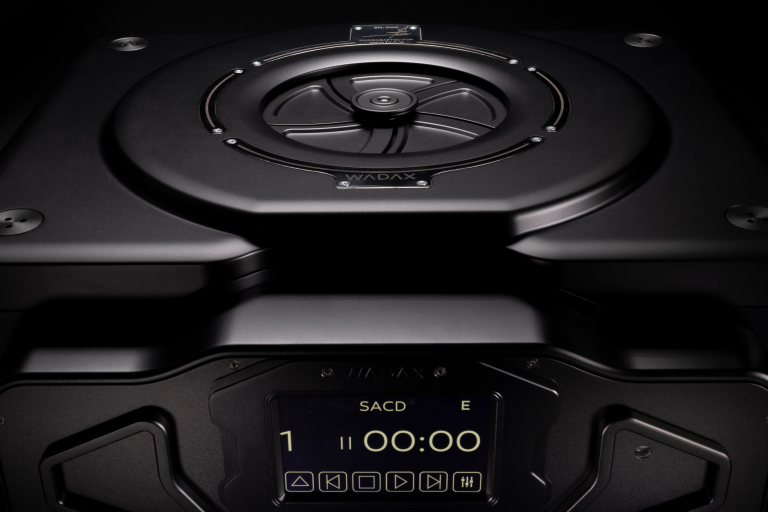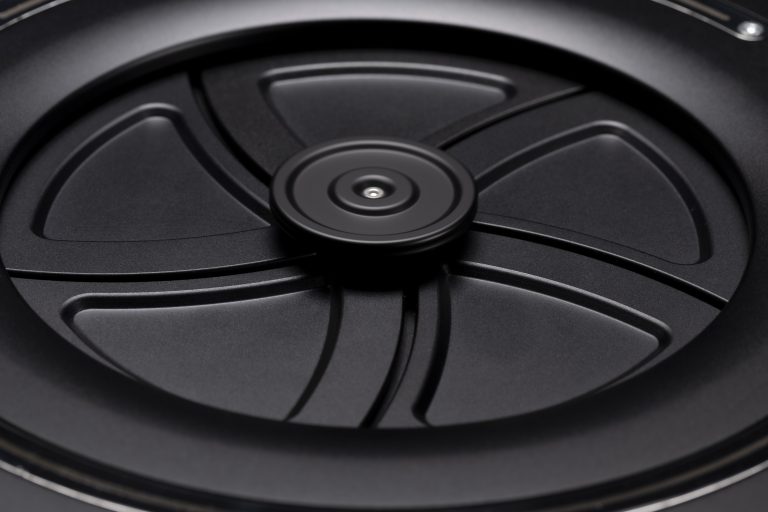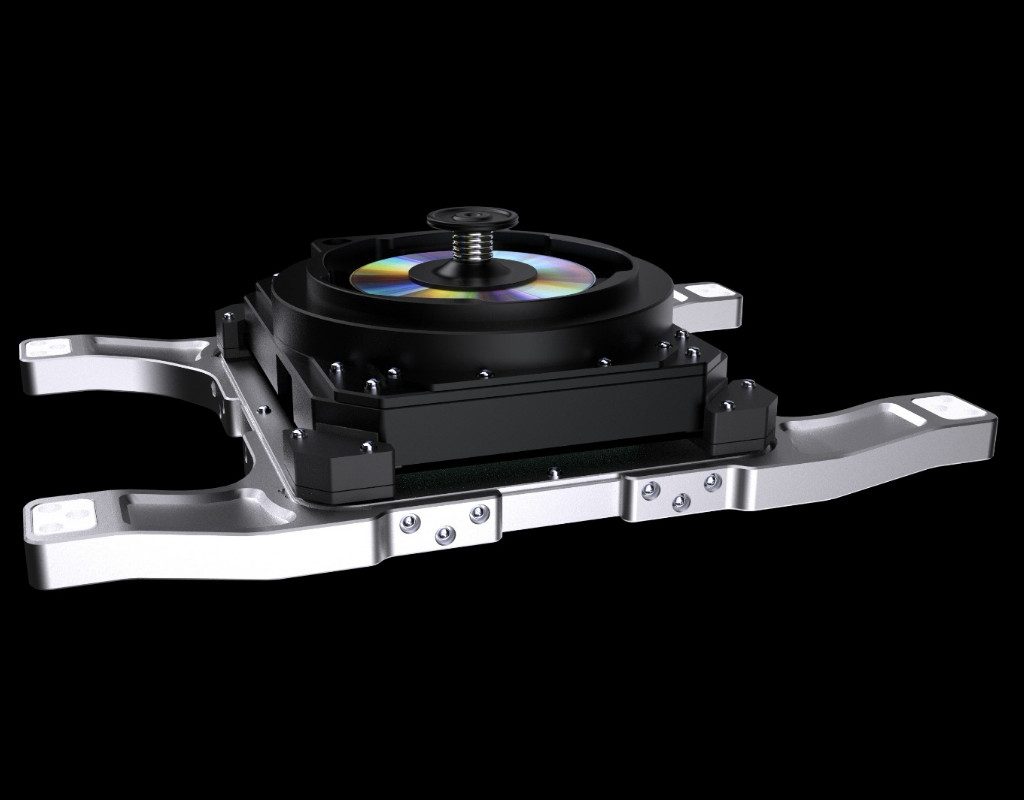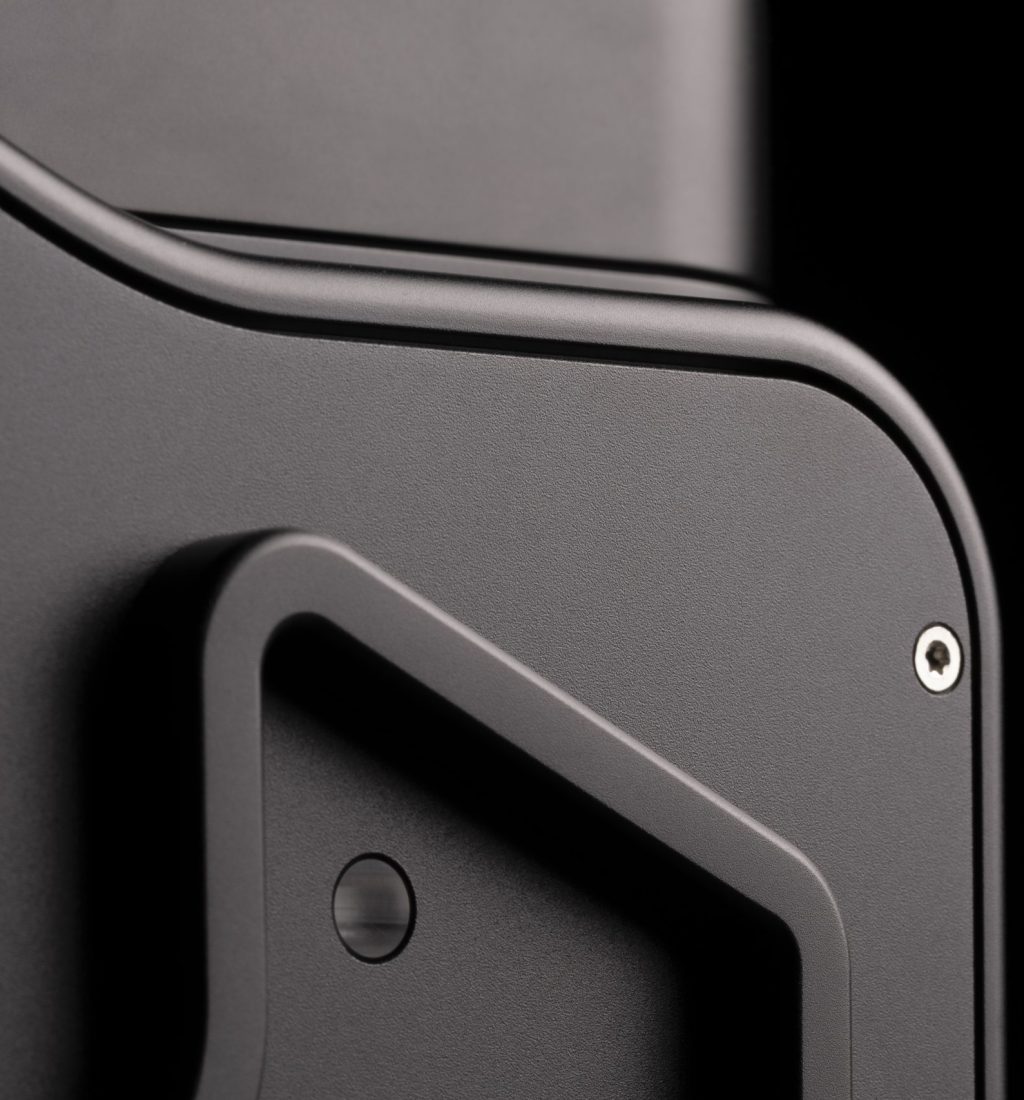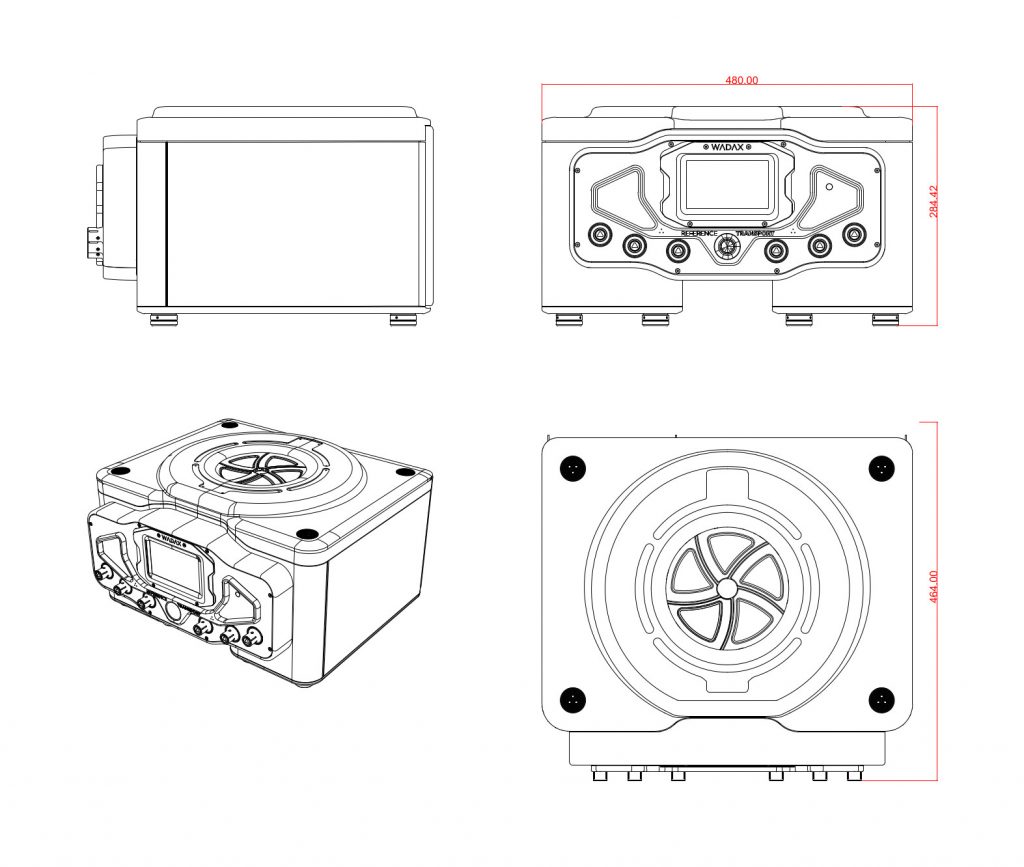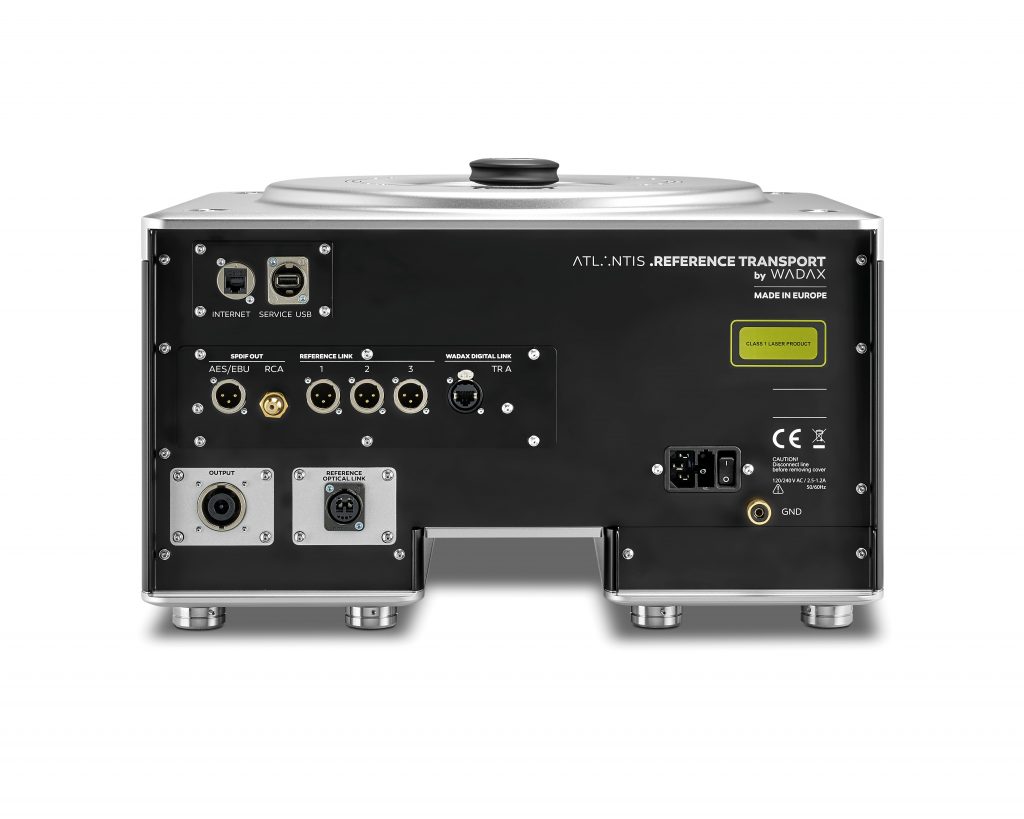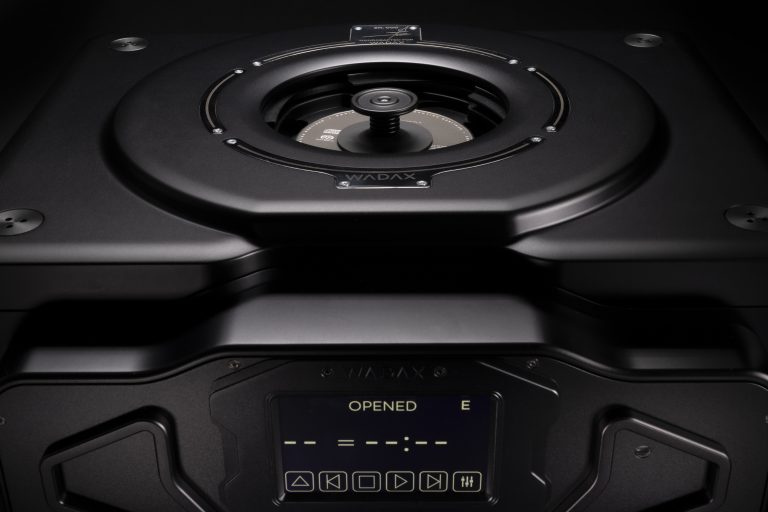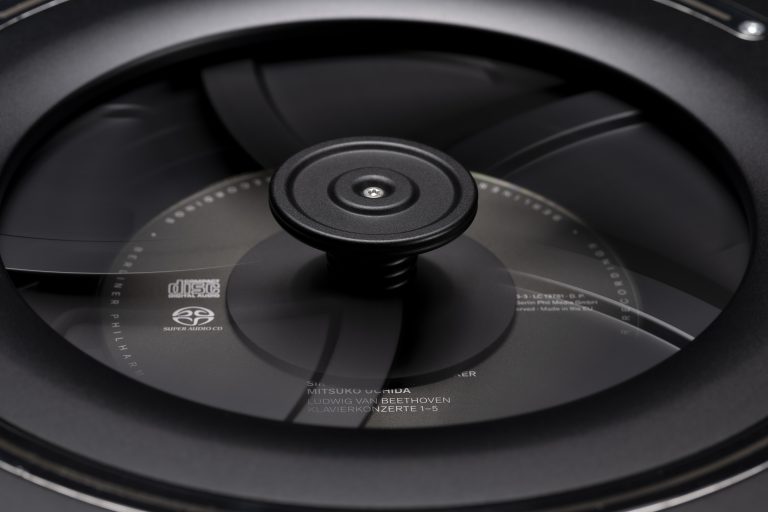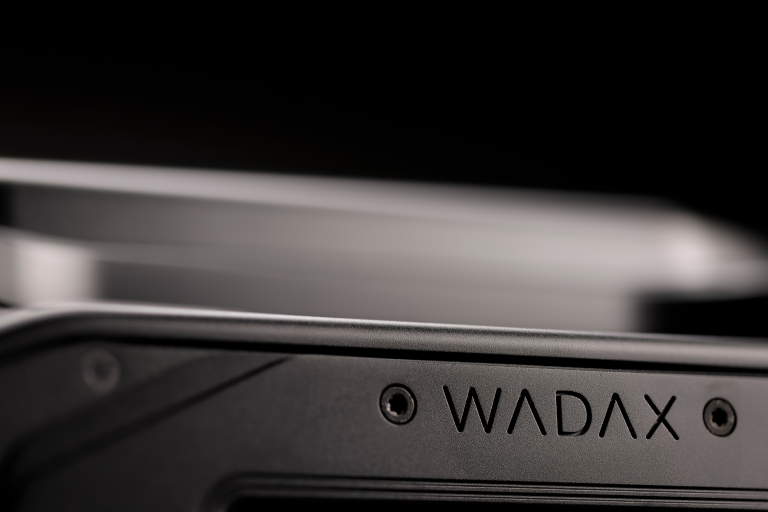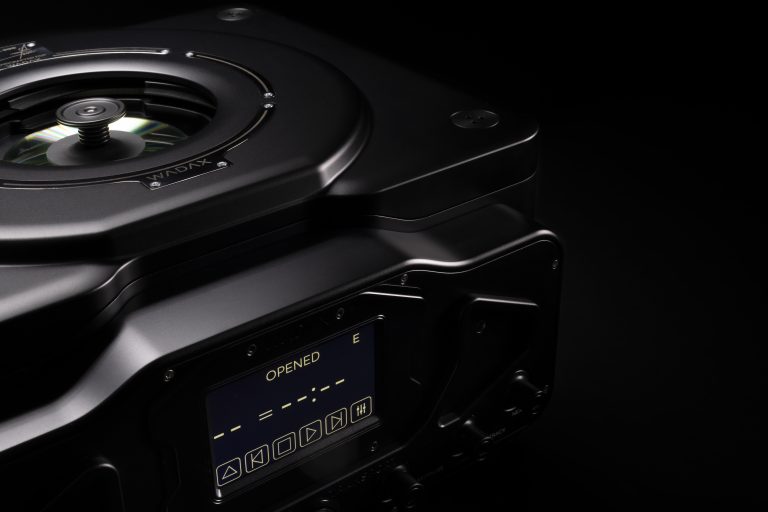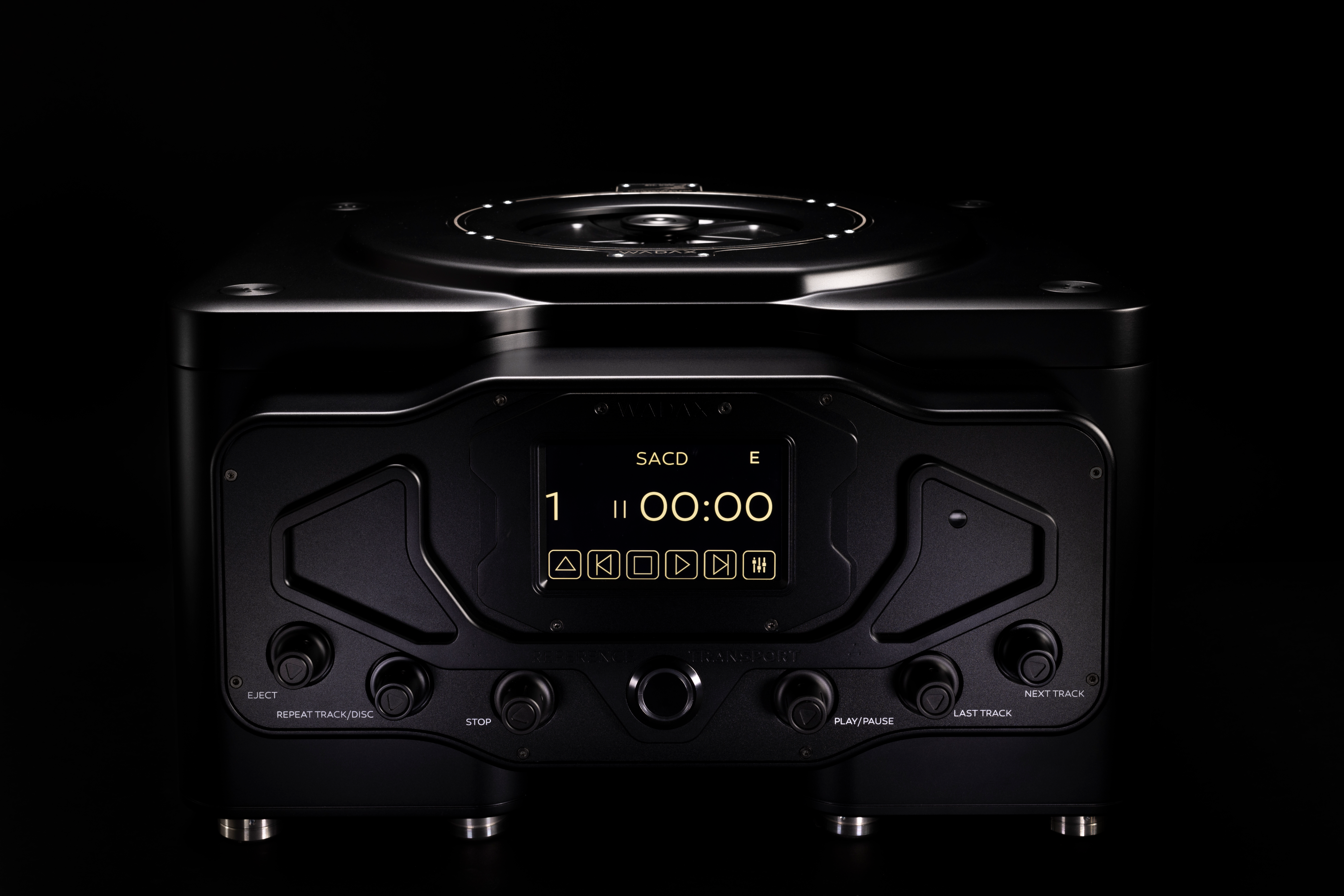
REFERENCE TRANSPORT
The Atlantis Reference Transport distills WADAX’s optical‑disc heritage and know-how into a singular, State‑of‑the‑Art instrument. Mated to the Atlantis Reference DAC, it treats optical disc playback as a holistic, end‑to‑end transfer—from the microscopic transitions on a disc to the analog output of your DAC—so every element serves the musical message.
Within the Reference philosophy, optical reading, digital transmission and conversion are conceived as one continuum, with power and timing elevated from “supporting roles” to performance‑defining foundations. Seamless within the Reference ecosystem, it also scales in lockstep with Reference DAC and PSU for even deeper immersion and greater realism.
At the Transport’s core are proprietary technologies that set a new benchmark for optical replay: the THOR PRO optical engine for reading accuracy and stability, the Akasa optical interface that isolates and preserves waveform integrity between Transport and DAC, and WADAX’s DWC/TcT system that refines the outgoing digital stream while letting the user to subtly tailor presentation without touching the data itself, remaining bit-perfect. The result is effortless flow, dimensionality and intent, optimizable for each system setup and combination.
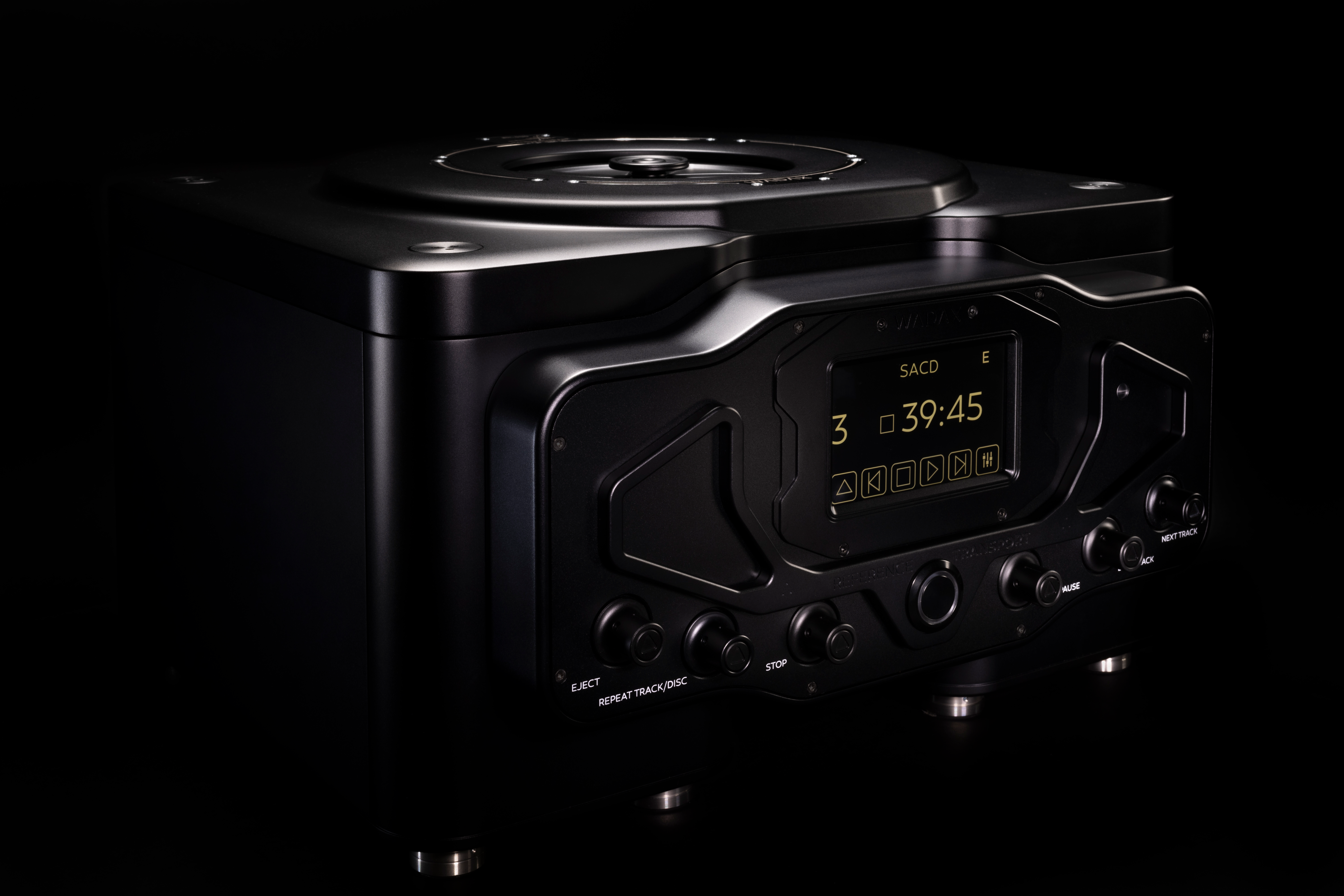
THOR PRO Optical Engine
25 kg, 33 parts, 9 materials
Optical disc replay is mechanically hostile. A CD spins between roughly 200–500 rpm, while an SACD widens that to 700–1,500 rpm—turning the disc itself into a wide‑band vibration generator that excites resonances across sub‑assemblies. Add airborne and structure‑borne energy from the room, and the pickup still has to resolve tiny reflection changes from pits and lands. THOR PRO was built to master these physics—a complete redesign of the THOR original mechanism that prioritizes controlled energy paths, damping, and isolation so the disc/pickup assembly remains composed in the real world.
Behind that serenity is quantifiable complexity: THOR PRO is an extraordinarily complex mechanism comprising 33 custom‑machined parts in 9 carefully selected materials, and the optical engine alone weighs 25 kg. Its structure was shaped by a three‑year Finite Element Analysis program to channel, damp or isolate energy as required, and it’s engineered together with the Reference‑grade chassis as a single consolidated assembly. Within the broader Transport—620 mechanical parts in total and a 60 kg reference chassis—is the mechanical foundation that enables stable reading, a quieter noise floor, and the ease and authority you hear.
Akasa Optical Interface
≥2 m Far‑Field Isolation • 25‑Element Connector • 10.17 ns Alignment
Akasa is WADAX’s all‑optical link: audio data, control, and clocking information travel as light—never as electrons. It replaces millimeter‑scale near‑field isolators with far‑field galvanic isolation defined by a ≥2 m physical barrier between devices, eliminating parasitic capacitive/inductive coupling at the root. To keep the digital waveform pristine, WADAX co‑developed an optical material with perfectly flat dispersion in a targeted spectral window so the signal shape is preserved regardless of cable length. The transport protocol runs at a constant, ultra‑high native optical speed (well beyond audio bandwidth) with flow‑control, while the DAC remains master of time—delivering perfect electrical isolation, zero ground loops, zero noise crosstalk, and zero noise‑floor modulation as measurable foundations for musical performance.
Precision hardware completes the picture: a Neutrik‑style optical connector mated to a CNC‑machined 25‑element resonance‑control structure protects the high‑speed optical sensors; a sample‑alignment protocol guarantees ordering accuracy down to 10.17 ns; and one optical cable carries everything—data, flow control, and clocking information—with no penalty in any cable length. Full performance is realized with the Reference DAC fitted with the Akasa Dual Optical Module, while legacy electrical outputs remain for universal compatibility. Akasa is the reference path when nothing less than State‑of‑the‑Art will do.
Reference Power Architecture
Dual 400 VA Core • Multi‑Stage Regulation • External‑PSU Ready
Power isn’t a supporting act in the Reference ecosystem—it’s a primary instrument. The Atlantis Reference Transport’s built‑in PSU inherits the Reference DAC/Server topology and is anchored by two custom 400 VA transformers, feeding the machine through an ultra‑quiet, multi‑stage regulation network that drives the product’s different domains. Housing such large‑capacity transformers in the same chassis as sensitive optics and high‑speed logic demands extreme control of vibration, leakage flux, and ground behavior; WADAX’s solution treats timing management and power as performance‑defining layers across the whole transfer function, safeguarding read integrity and musical flow from disc to DAC.
For the ultimate musical reproduction the Transport’s performance can be scaled up with the external Reference PSU via Akasa DC Reference cables. The Reference Transport includes an external‑PSU input socket for this purpose.
DWC & TcT
Reference Server Heritage • Bit‑Shape Control • Tuneable at the Source
Born from the Reference Server program, WADAX Digital Waveform Control (DWC) came out of fundamental research showing that in digital audio the value of the bits is only half the story—the shape of the digital waveform arriving at the DAC imprints itself on the analog result.
Born in the Reference Server program, Digital Waveform Control (DWC) treats the shape of the digital stream—not just its bit value —as a first‑order musical parameter. Bit value and its timing is just half the story. In the Atlantis Reference Transport this research becomes actionable: the outgoing stream remains bit‑perfect, while its waveform behavior is actively managed and kept time‑coherent by the Akasa link’s sample‑alignment protocol with resolution down to 10.17 ns. WADAX is the only company in High End to recognize—and systematically engineer for—the musical importance of bit‑shape, and the Reference Transport is its most explicit expression of that insight.
DWC is user‑addressable through TcT (Tuneable‑Clamp‑Technology): a mechanism that leverages the top‑loader clamp’s influence on the read‑bit waveform (edge slopes, undershoot/overshoot, etc.), without altering the data itself. Uniquely, the Reference Transport is the only disc reader that can be musically tuned by modifying the clamp’s construction, geometry, assembly, and materials—letting you refine presentation at the source and expand possibilities as future TcT accessories arrive.
Reference Ecosystem Scalability — Levels V–VIII
From reference‑grade foundation to flagship performance, step by step.
Level V — Reference DAC Core.
Start with Reference DAC powered by 2× Reference DAC‑PSUs via 2× Akasa DC Reference cables, and fit the DAC with the Akasa Dual Optical Module. This establishes ultra‑stable power domains and prepares the DAC for an all‑optical, far‑field isolated link from a transport when you’re ready to add it while offering Reference Server connectivity..
Level VI — Add the Atlantis Reference Transport.
Introduce the Reference Transport and connect it to the Reference DAC with a single Akasa Optical cable that carries all signals—including clocking—in optical form. You now have the complete WADAX optical chain with far‑field galvanic isolation and precision sample alignment between Transport and DAC plus the unique playback skills of the Atlantis Reference Transport.
Level VII — Externalize the Transport’s power.
Add the Reference PSU to the Transport and connect them with an Akasa DC Standard cable. Off‑chassis power supply and dedicated DC delivery further reduce domain interaction and noise‑floor modulation for greater dynamic nuance and spatial resolution.
Level VIII — Flagship.
Replace the Standard DC link with an Akasa DC Reference cable between the Reference PSU and the Transport. This final step unlocks the current WADAX flagship performance (Level VIII)—the highest expression of the Reference system’s optical, timing, and power architecture.
Note: The Akasa Dual Optical Module is a user‑installable upgrade for the Reference DAC and is required to realize Levels VI–VIII.
